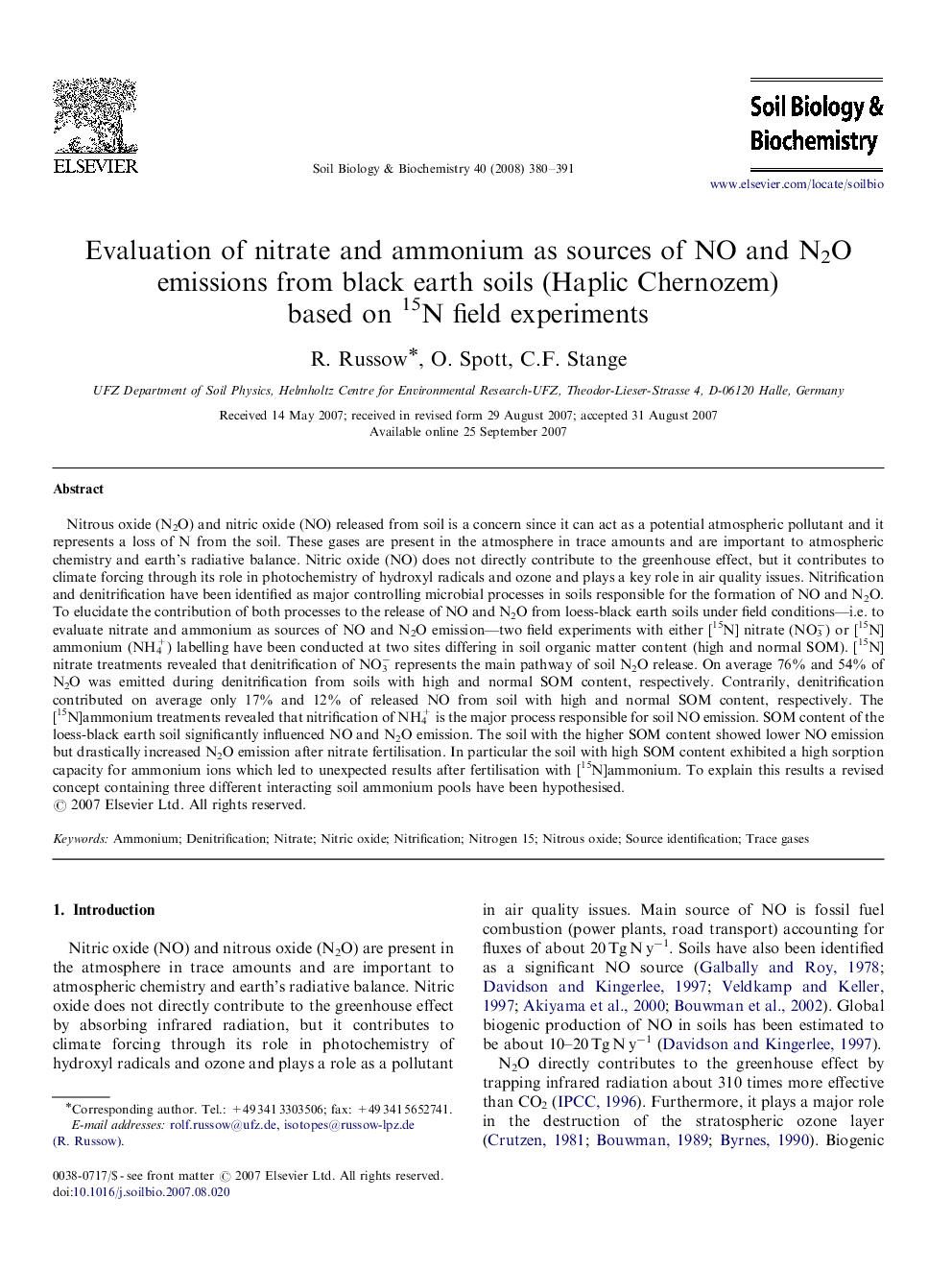| کد مقاله | کد نشریه | سال انتشار | مقاله انگلیسی | نسخه تمام متن |
|---|---|---|---|---|
| 2025332 | 1069992 | 2008 | 12 صفحه PDF | دانلود رایگان |
عنوان انگلیسی مقاله ISI
Evaluation of nitrate and ammonium as sources of NO and N2O emissions from black earth soils (Haplic Chernozem) based on 15N field experiments
دانلود مقاله + سفارش ترجمه
دانلود مقاله ISI انگلیسی
رایگان برای ایرانیان
کلمات کلیدی
موضوعات مرتبط
علوم زیستی و بیوفناوری
علوم کشاورزی و بیولوژیک
دانش خاک شناسی
پیش نمایش صفحه اول مقاله

چکیده انگلیسی
Nitrous oxide (N2O) and nitric oxide (NO) released from soil is a concern since it can act as a potential atmospheric pollutant and it represents a loss of N from the soil. These gases are present in the atmosphere in trace amounts and are important to atmospheric chemistry and earth's radiative balance. Nitric oxide (NO) does not directly contribute to the greenhouse effect, but it contributes to climate forcing through its role in photochemistry of hydroxyl radicals and ozone and plays a key role in air quality issues. Nitrification and denitrification have been identified as major controlling microbial processes in soils responsible for the formation of NO and N2O. To elucidate the contribution of both processes to the release of NO and N2O from loess-black earth soils under field conditions-i.e. to evaluate nitrate and ammonium as sources of NO and N2O emission-two field experiments with either [15N] nitrate (NO3â) or [15N] ammonium (NH4+) labelling have been conducted at two sites differing in soil organic matter content (high and normal SOM). [15N] nitrate treatments revealed that denitrification of NO3â represents the main pathway of soil N2O release. On average 76% and 54% of N2O was emitted during denitrification from soils with high and normal SOM content, respectively. Contrarily, denitrification contributed on average only 17% and 12% of released NO from soil with high and normal SOM content, respectively. The [15N]ammonium treatments revealed that nitrification of NH4+ is the major process responsible for soil NO emission. SOM content of the loess-black earth soil significantly influenced NO and N2O emission. The soil with the higher SOM content showed lower NO emission but drastically increased N2O emission after nitrate fertilisation. In particular the soil with high SOM content exhibited a high sorption capacity for ammonium ions which led to unexpected results after fertilisation with [15N]ammonium. To explain this results a revised concept containing three different interacting soil ammonium pools have been hypothesised.
ناشر
Database: Elsevier - ScienceDirect (ساینس دایرکت)
Journal: Soil Biology and Biochemistry - Volume 40, Issue 2, February 2008, Pages 380-391
Journal: Soil Biology and Biochemistry - Volume 40, Issue 2, February 2008, Pages 380-391
نویسندگان
R. Russow, O. Spott, C.F. Stange,